Most people come for the abbey, but if you follow the outer path instead of heading straight up, you start to notice something else. This island wasn’t just a sanctuary. It was a fortress, the kind that stared down kings and cannons and didn’t blink.
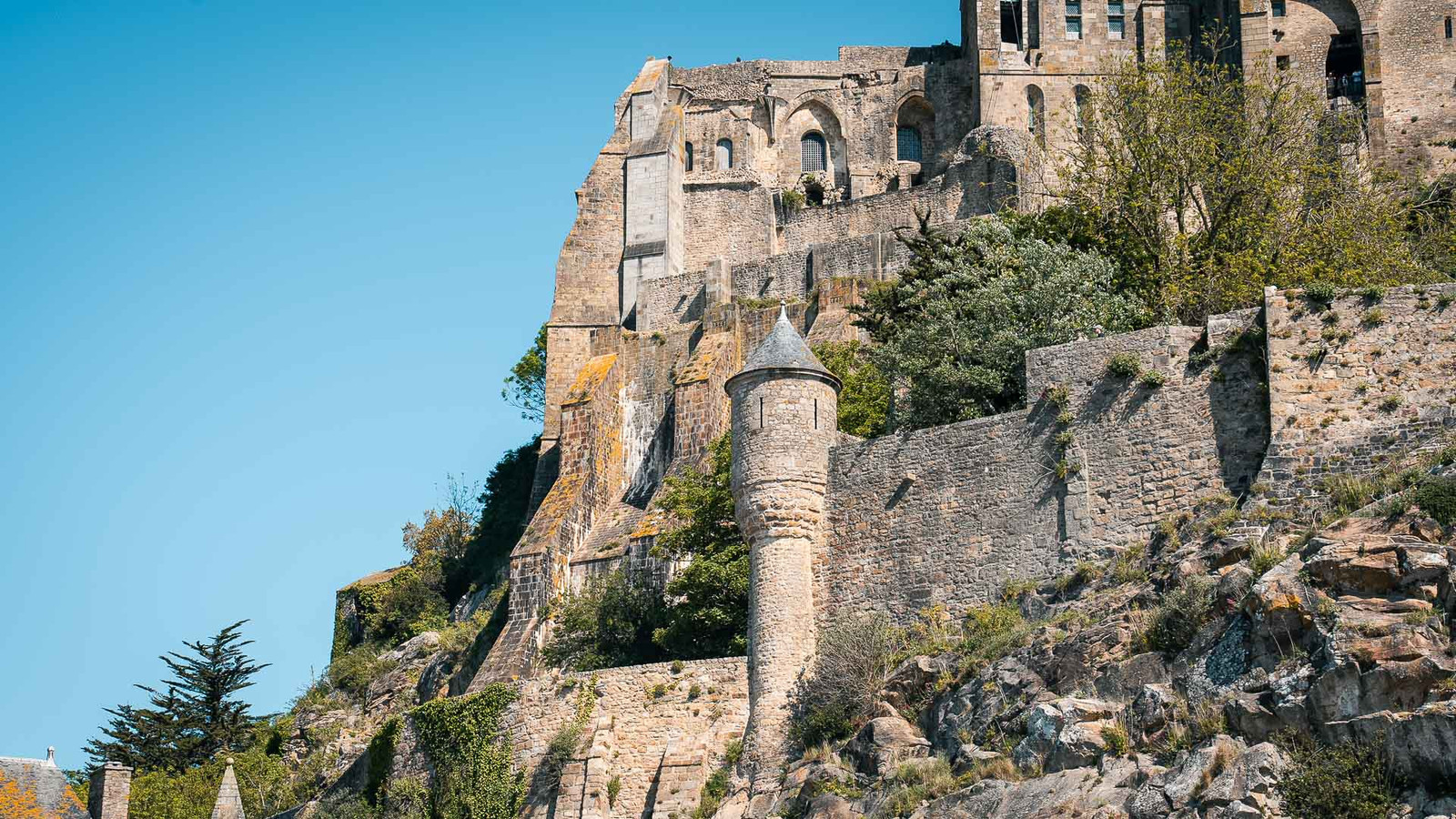
You can still walk the walls. That’s the best way to feel it. The stone ramparts wrap the island like a clenched jaw, with towers jutting out like broken teeth. Some are round, some square, a few oddly elegant, but they were all built to keep people out. Or in.
The earliest real defenses went up after a nasty Breton raid in 1204. Before that, it was just a wooden fence, plus the abbey’s own stone walls. The monks wised up fast. By the time the Hundred Years’ War hit, Mont-Saint-Michel had grown into a fortress with layers, towers, gates, artillery points, secret stairwells. The English tried to take it. Repeatedly. Never managed.
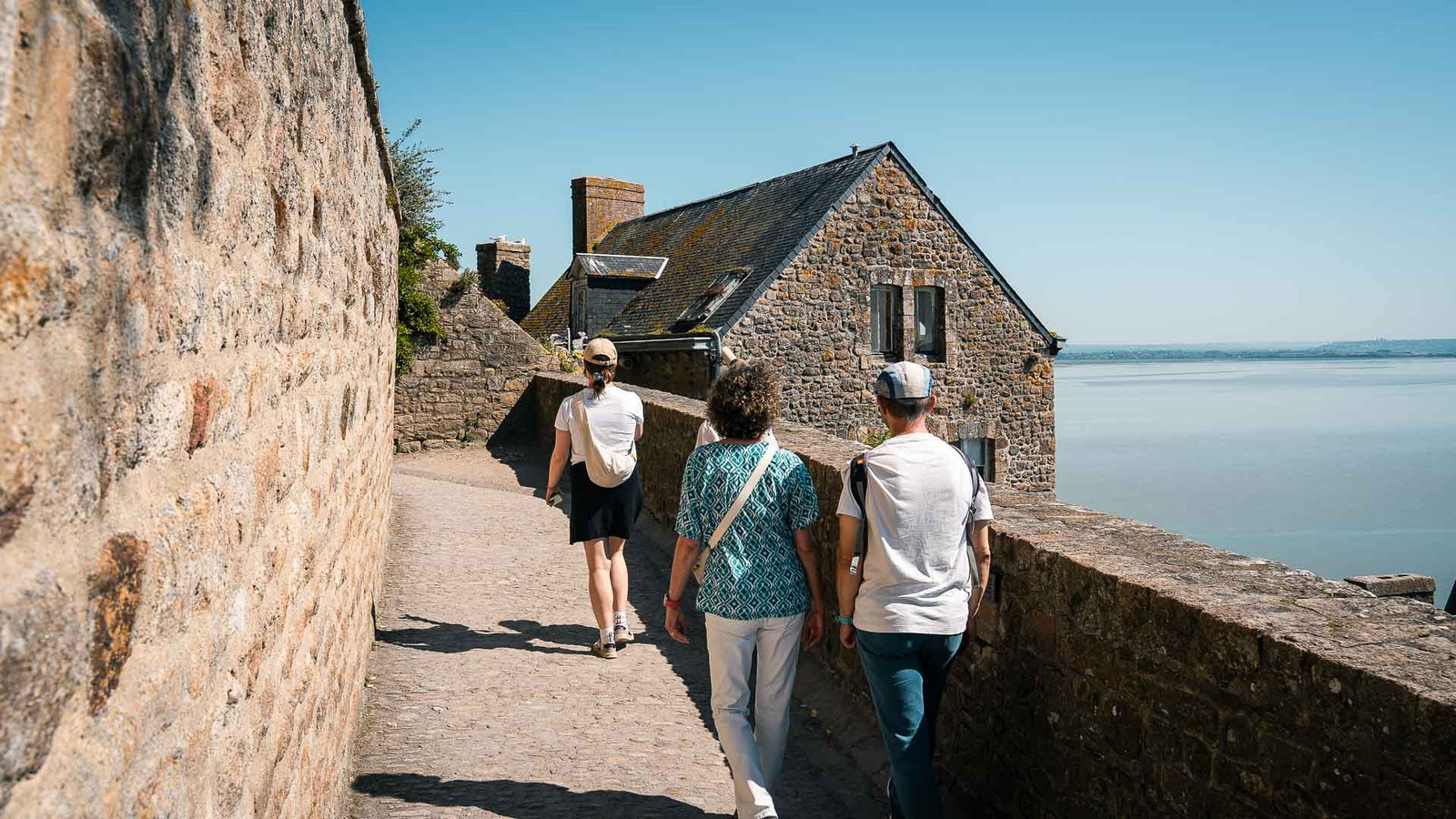
Today, the walk along the chemin de ronde, the sentry path, is open to anyone with decent shoes and a little curiosity. The views are great, sure. But it’s the detail that grabs you. The grooves worn down by centuries of boots. The machicolations overhead (those murder-holes where defenders dumped things on invaders). The spots where you can imagine the shouting.
Towers with Stories, Not Just Names
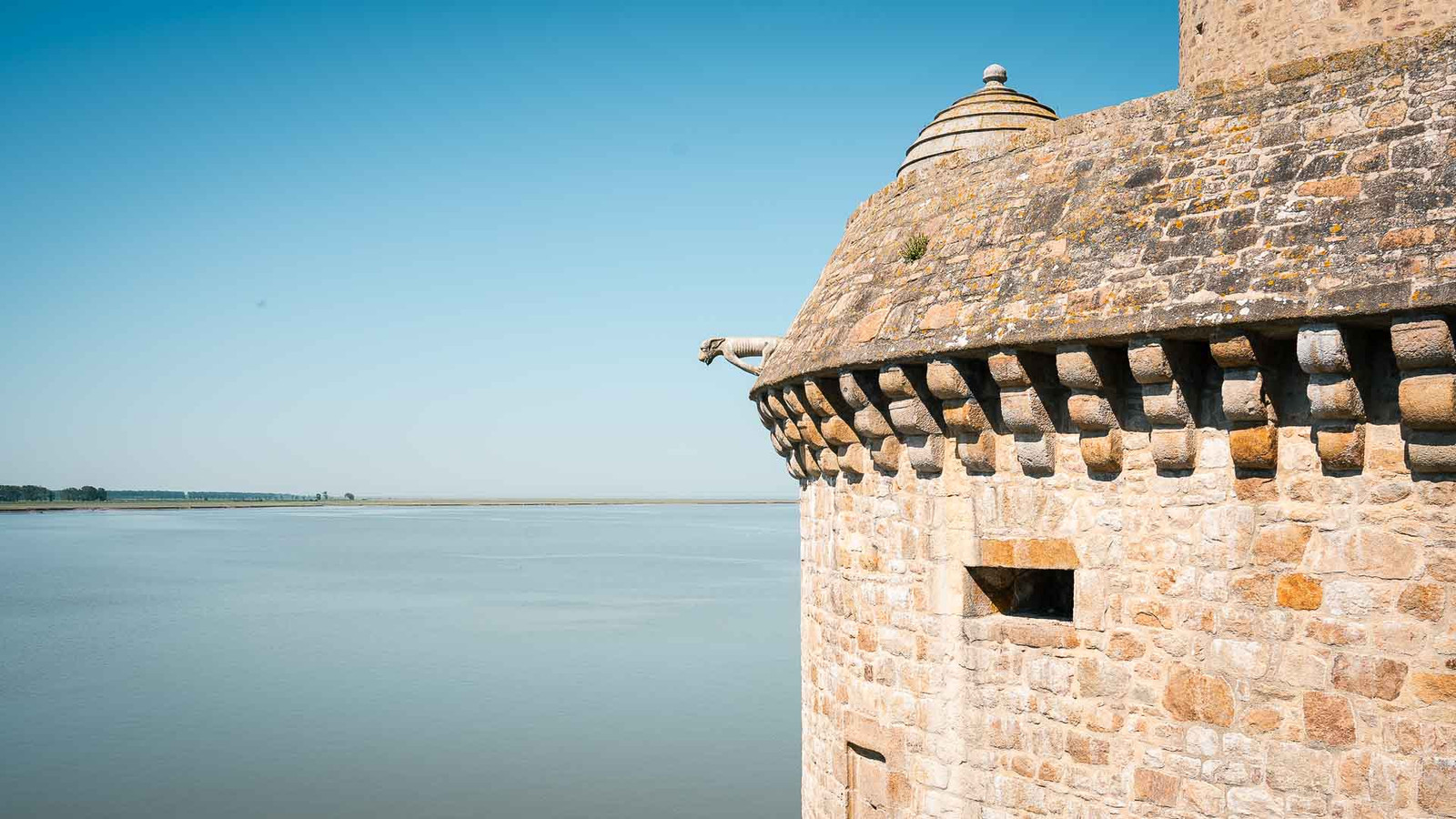
You’ll pass a lot of towers, each with its own weird little tale. Some were built for war, others repurposed, patched, or forgotten. A few highlights:
- Tour du Roy (1417): This one’s your classic gateway guardian. Originally had a drawbridge and a spiked portcullis. Think castle clichés, but real. Still looks like it could lock up tight in minutes.
- Tour de l’Arcade: Less famous, but crucial. Helped guard the eastern flank, which was vulnerable. Built the same year as the King’s Tower.
- Tour Béatrix (1440-ish): Horseshoe-shaped and designed to resist cannon fire. Built by Louis d’Estouteville, who took defense seriously.
- Tour Basse: Old, plain, effective. From the 13th century, flattened and rebuilt around 1700. Has cannon slits and a very no-nonsense vibe.
- Tour Cholet: You can still spot the machicolations. Defenders dropped stones, oil, insults — whatever worked.
- Tour Boucle (late 1400s): An artillery bastion with angles and gun platforms. Odd little turret stuck to the top corner like someone added it on a dare.
- Tour Gabriel (1534): Started as a cannon platform. Became a lighthouse. Briefly had a windmill. Jack-of-all-trades tower.
- Tour Nord (1311): Right at the base of the abbey’s big staircase. Looks out over the tidal flats. Good place to stop and catch your breath.
- Tour Claudine: Not a looker, but important. Used for storing weapons and launching counterattacks. Originally round, now kind of squat.
- Tour des Corbins: Circular base, octagonal top, spiral stairs inside. Leads to La Merveille if you know where to look.
Each of these towers was shaped by what the Mont needed at the time, defense, lookout, intimidation, storage. Nothing decorative here unless it doubled as useful.
Gates and Layers and More Gates
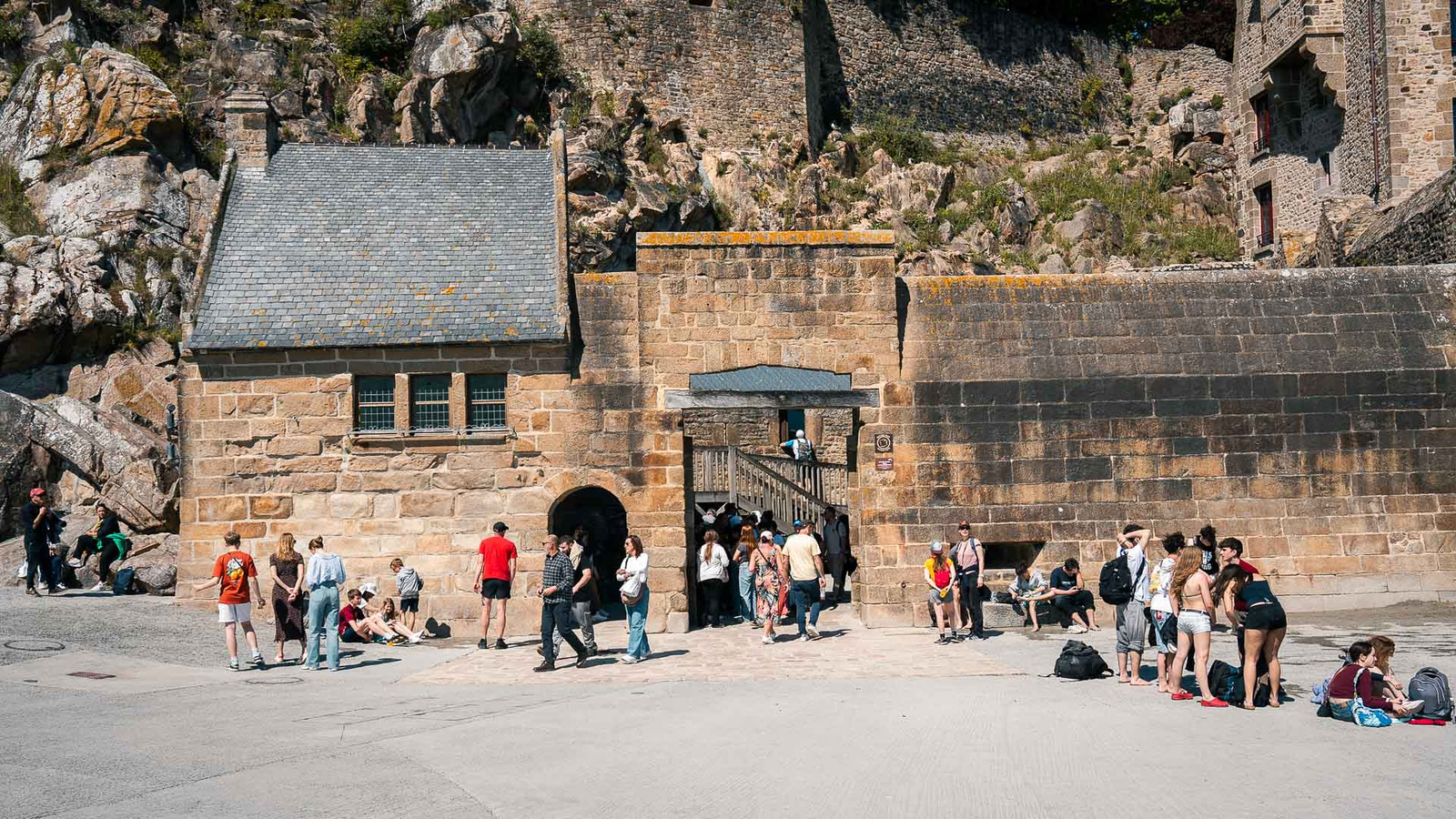
There isn’t just one way in. There never was. That’s the point. Mont-Saint-Michel is a maze of doors within doors. If the enemy got past one, there was always another.
- Porte du Roy: The main gate. Rebuilt in 1417, loaded with defenses. Still feels like you’re entering a stronghold.
- Barbican and Boulevard: Think of these as pre-walls to the wall. Built in 1440 for extra artillery protection.
- Porte de l’Avancée (1530): A more modern take, adapted for cannon warfare.
- Porte du Lion & Trou du Chat: Side entries tucked into the ramparts. Used for slipping in troops and supplies. You won’t find them unless you look closely.
And then there’s the chemin de ronde, the wall-top walkway that ties it all together. It’s not just a scenic route. It’s a circuit, the kind that let defenders run from one end of the Mont to the other without leaving the walls.
Stone, Sea, and Strategy
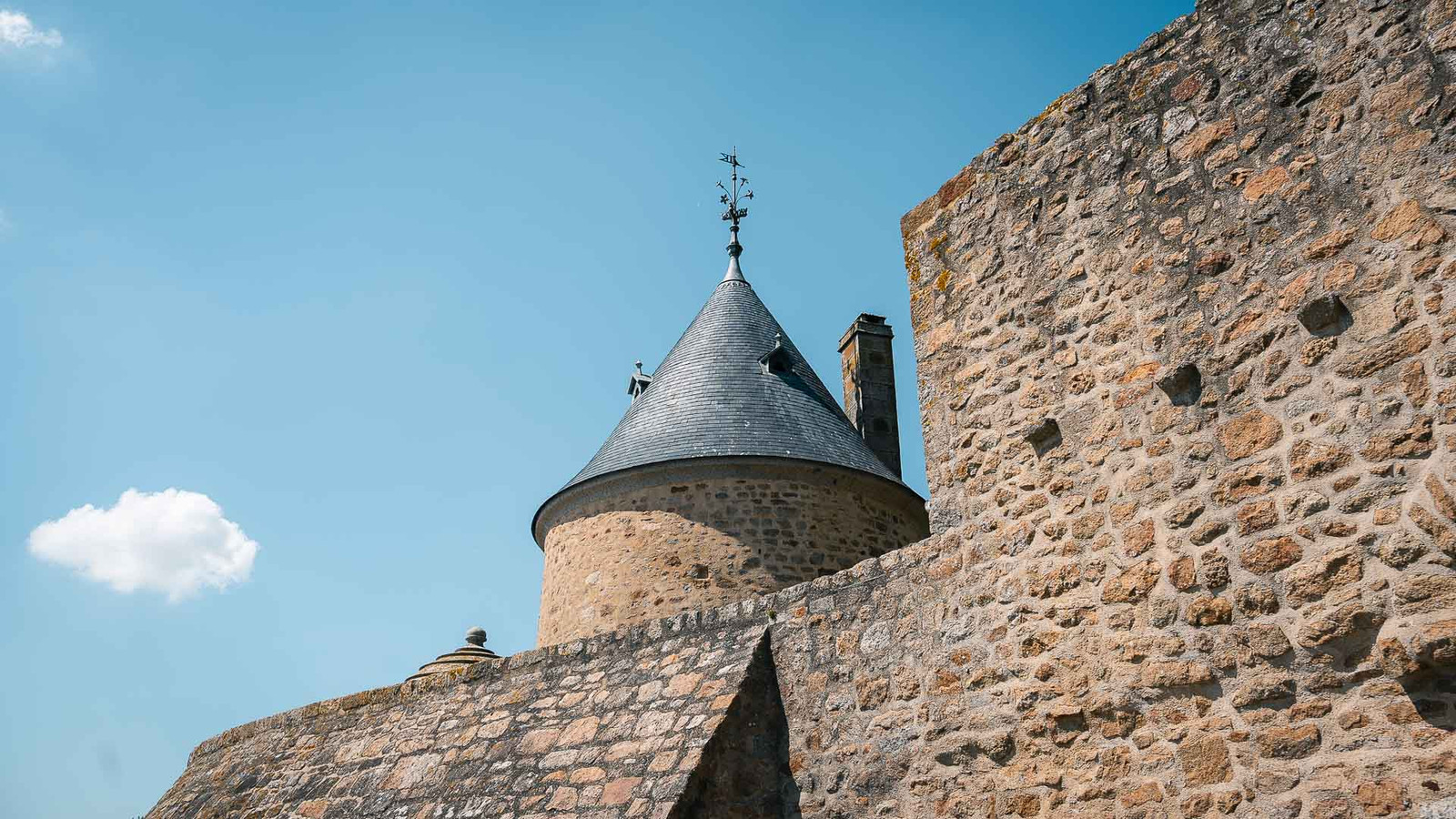
The walls are smarter than they look. Curtain walls, curved towers to deflect impact, sloped angles, covered gun platforms, this place was always adapting. It had to.
Much of what you see is from the 14th and 15th centuries, though some of it stretches back even further. The Tour Nord and parts of the eastern defenses date to the early 1300s. Walk the loop at low tide and you can circle most of it from the outside, from Tour Gabriel to Tour Nord, with the sea stretching out on one side and the island rising on the other.
Watch your step. The stone’s slick when damp, and the paths aren’t always even. But it’s worth it. You’ll pass old cisterns, munitions rooms, hidden staircases. The kind of military architecture that wasn’t made for beauty but somehow ended up beautiful anyway.
Not Just Ruins — Still Standing, Still Watching
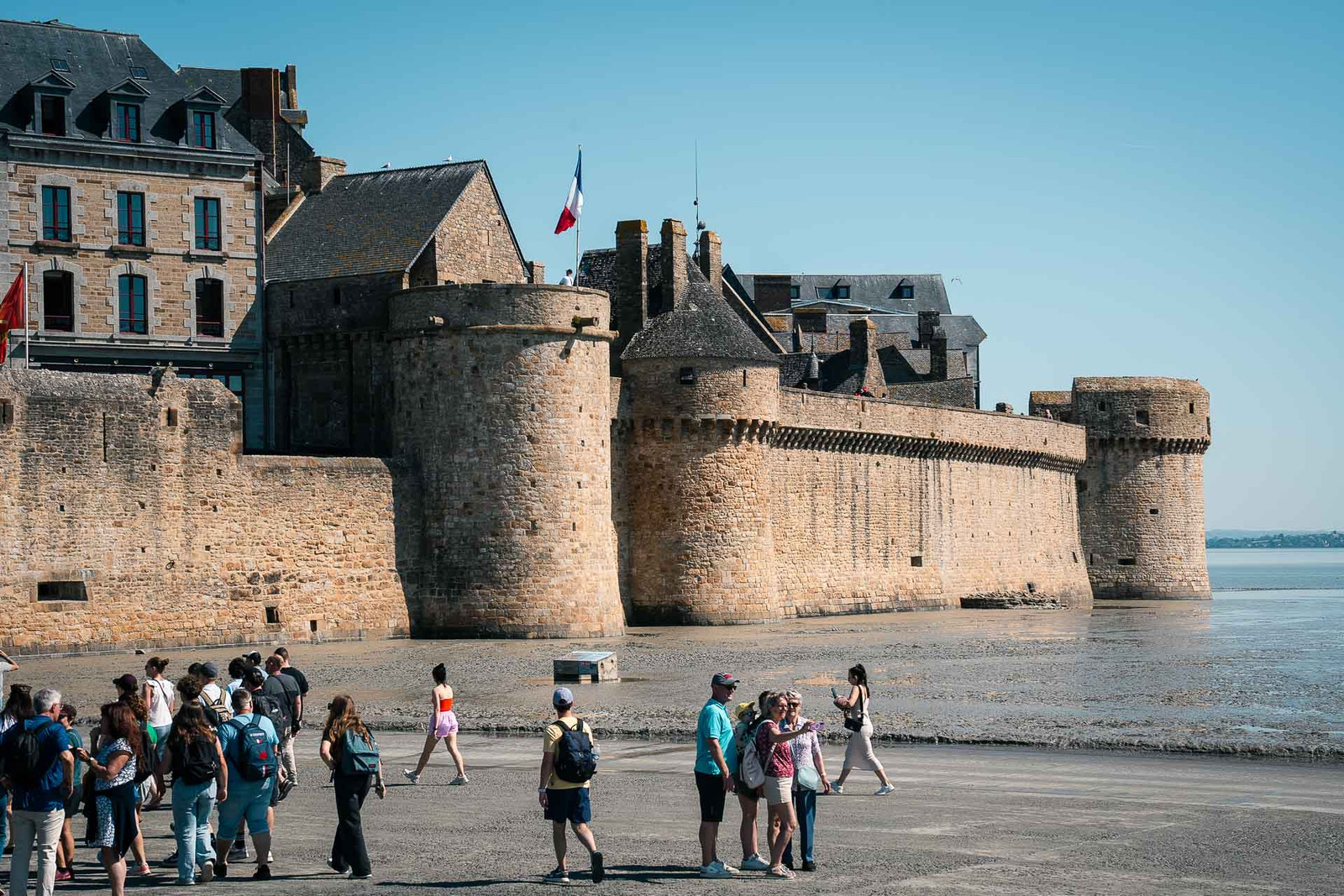
Mont-Saint-Michel’s ramparts aren’t abandoned relics. They’re part of a living town. You might spot laundry drying behind a cannon embrasure or a cat napping on a parapet. That’s part of the magic. History isn’t under glass here. It’s still breathing.
The towers and walls were declared a Historic Monument back in 1875. UNESCO added its stamp in 1979. But labels aside, the place holds its own. These aren’t props. They’re survivors.
And walking them, especially when the fog rolls in or the tide pulls away, is the best way to meet the Mont on its own terms. Solid. Scrappy. And very much alive.